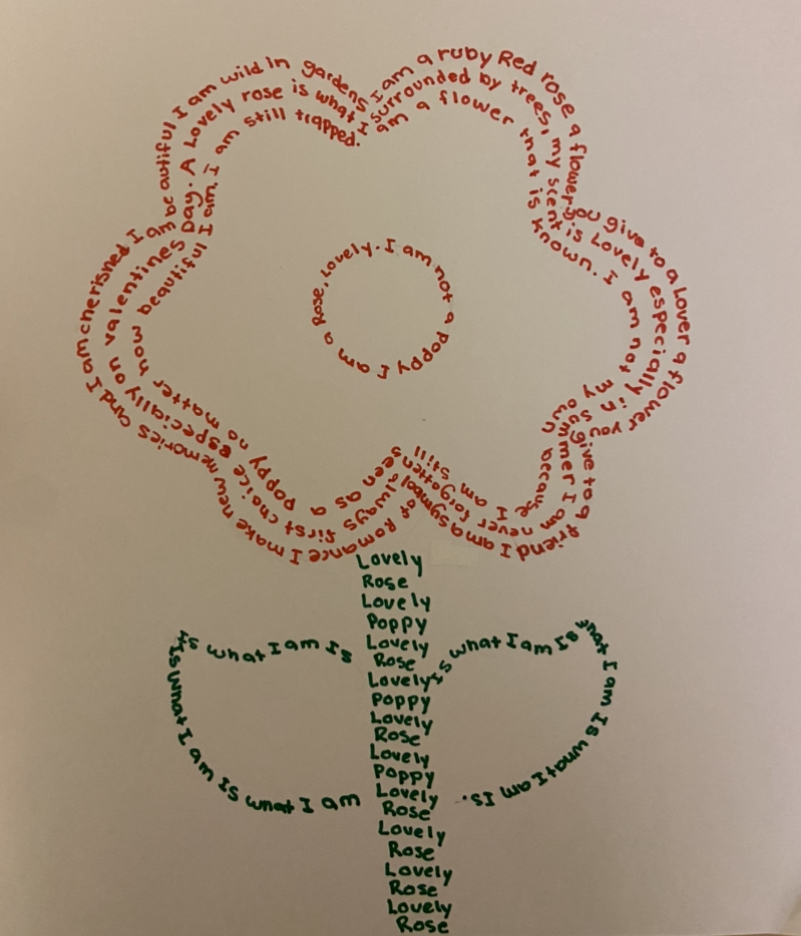The title of my blog post is taken from a Bible Verse (Isaiah 40:28-31). The verse is as follows:
Do you not know? Have you not heard? The LORD is the everlasting God, the Creator of the ends of the earth. He will not grow tired or weary, and his understanding no one can fathom. He gives strength to the weary and increases the power of the weak. Even youths grow tired and weary, and young men stumble and fall; but those who hope in the LORD will renew their strength. They will soar on wings like eagles; they will run and not grow weary, they will walk and not be faint.
This is the Christian message that I believe Herbert does an exceptional job at portraying in “Easter Wings.” A message he portrays far more powerfully than the messages in “The Altar.”
After reading both poems, I was fascinated specifically by an element in “Easter Wings”: the paradox created by the theme of sin. When we hear the word sin, we think of mistakes, we think of lying and cheating, we think of immoral people. However, in “The Altar,” and in Christianity as a whole, sins are not entirely evil. They do not solely come with negativity. In fact, without sin, how could one form a relationship with God? It is through our sins that we are able to ask the Lord for forgiveness. It is through the speaker’s sins that he or she is able to “rise” from his state of tenderness, and “combine” with Christ. This line is filled with Christ imagery, especially to the resurrection of Christ where he rises from the dead.
The singing lark that the speaker wishes to become is a symbol of freedom. One might imagine the speaker soaring upwards in the sky like a lark, up towards the heavens. In order to do this, though, the speaker must embrace the imminent “fall” that comes from his sins. The speaker suffers through sickness, shame, and sorrow as a result of his sins. However, God does not punish the speaker for his sins; the speaker brings this punishment upon himself. God instead punishes the sin, as noted in line 13 of the poem. So, although sin has damaged the speaker’s wing, the speaker knows that the Lord will forgive him, and he can therefore rest upon the wings of the Lord in order to “advance [his] flight.” Notice that this line is actually a modified repetition from line 10, where the speaker states “Then shall the fall further the flight in me.” If you look carefully at the two sections within this poem, you will notice that numerous lines seem to parallel each other, and include large portions of repetition. So why does this matter? Because, by the second verse, the Speaker has become the decaying man from the first verse. He has become the singing lark from the first verse, as well. And, by doing so, he has reached a point where he can rise, just as the Lord did. He can become one with the Lord, just as the Lord became one with God. This brings us back to the beautiful paradox that this poem portrays: that while sinning may seem so negative on the outside, it can be so beautiful on the inside. We are all imperfect, and therefore we all will sin. But the Lord knows this. And he will forgive the sinners who ask for forgiveness. And he will provide the speaker with wings that give him strength and bring him to the heavens, where he can combine with the Lord. This forgiveness is what Christianity is all about. Because…
Even youths grow tired and weary, and young men stumble and fall; but those who hope in the Lord will renew their strength. They will soar on wings like eagles; they will run and not grow weary, they will walk and not be faint.
What could be more moving and powerful than that?
